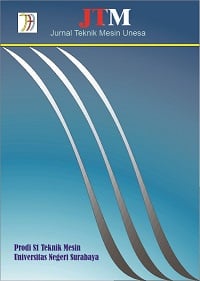EKSPERIMENTAL PENGEMBANGAN VARIASI SUDUT SUDU BERPENAMPANG V TERHADAP DAYA DAN EFISIENSI TURBIN CROSSFLOW POROS HORIZONTAL
Downloads
Download data is not yet available.
 Abstract views: 156
,
Abstract views: 156
, PDF Downloads: 140
PDF Downloads: 140


